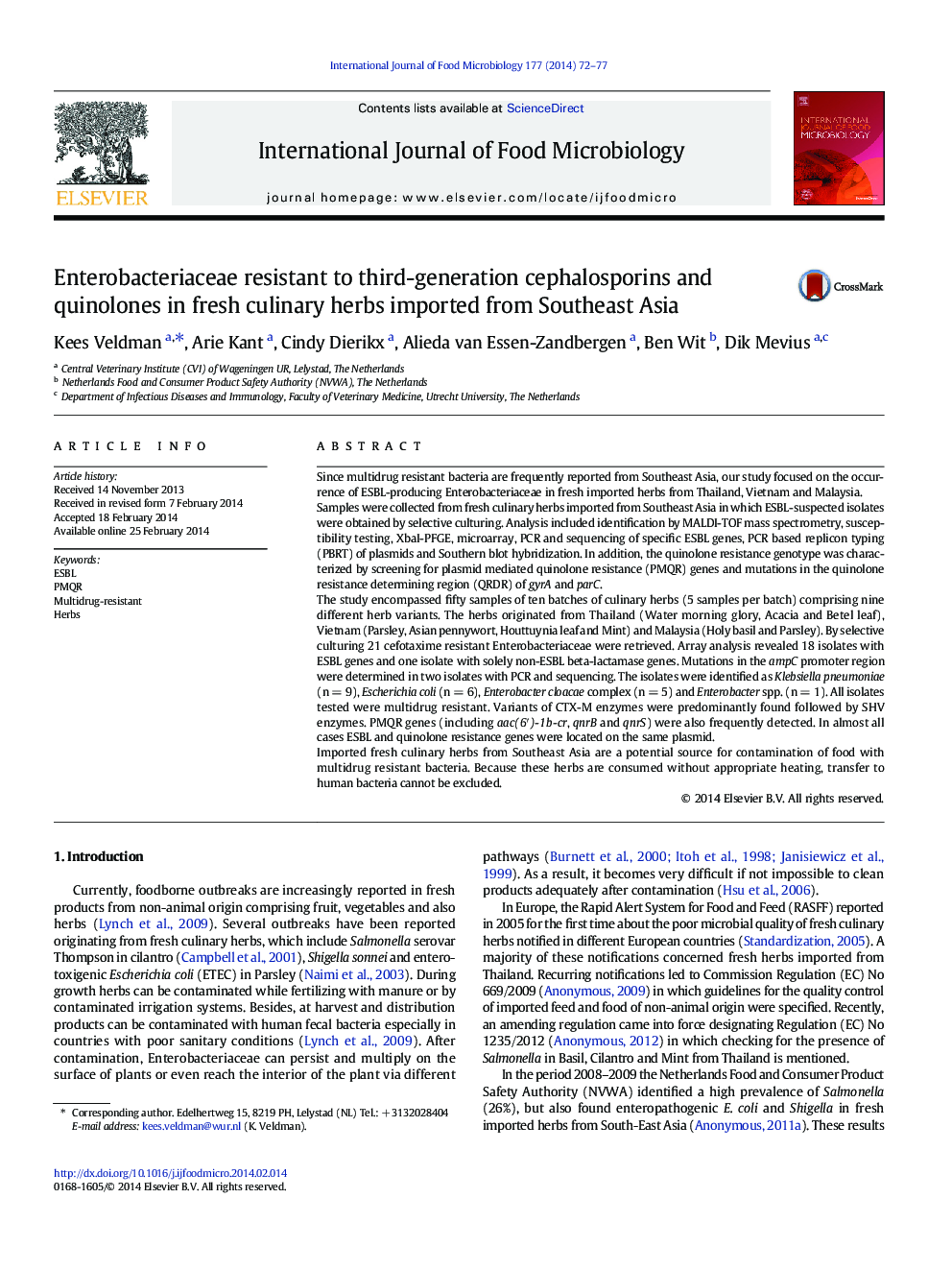| کد مقاله | کد نشریه | سال انتشار | مقاله انگلیسی | نسخه تمام متن |
|---|---|---|---|---|
| 4366973 | 1616605 | 2014 | 6 صفحه PDF | دانلود رایگان |

• Herbs from Southeast Asia can be contaminated with multidrug-resistant bacteria.
• Bacteria frequently harbored ESBL and PMQR genes located on a single plasmid.
• Because these herbs are consumed without heating transfer to humans is possible.
Since multidrug resistant bacteria are frequently reported from Southeast Asia, our study focused on the occurrence of ESBL-producing Enterobacteriaceae in fresh imported herbs from Thailand, Vietnam and Malaysia.Samples were collected from fresh culinary herbs imported from Southeast Asia in which ESBL-suspected isolates were obtained by selective culturing. Analysis included identification by MALDI-TOF mass spectrometry, susceptibility testing, XbaI-PFGE, microarray, PCR and sequencing of specific ESBL genes, PCR based replicon typing (PBRT) of plasmids and Southern blot hybridization. In addition, the quinolone resistance genotype was characterized by screening for plasmid mediated quinolone resistance (PMQR) genes and mutations in the quinolone resistance determining region (QRDR) of gyrA and parC.The study encompassed fifty samples of ten batches of culinary herbs (5 samples per batch) comprising nine different herb variants. The herbs originated from Thailand (Water morning glory, Acacia and Betel leaf), Vietnam (Parsley, Asian pennywort, Houttuynia leaf and Mint) and Malaysia (Holy basil and Parsley). By selective culturing 21 cefotaxime resistant Enterobacteriaceae were retrieved. Array analysis revealed 18 isolates with ESBL genes and one isolate with solely non-ESBL beta-lactamase genes. Mutations in the ampC promoter region were determined in two isolates with PCR and sequencing. The isolates were identified as Klebsiella pneumoniae (n = 9), Escherichia coli (n = 6), Enterobacter cloacae complex (n = 5) and Enterobacter spp. (n = 1). All isolates tested were multidrug resistant. Variants of CTX-M enzymes were predominantly found followed by SHV enzymes. PMQR genes (including aac(6′)-1b-cr, qnrB and qnrS) were also frequently detected. In almost all cases ESBL and quinolone resistance genes were located on the same plasmid.Imported fresh culinary herbs from Southeast Asia are a potential source for contamination of food with multidrug resistant bacteria. Because these herbs are consumed without appropriate heating, transfer to human bacteria cannot be excluded.
Journal: International Journal of Food Microbiology - Volume 177, 2 May 2014, Pages 72–77